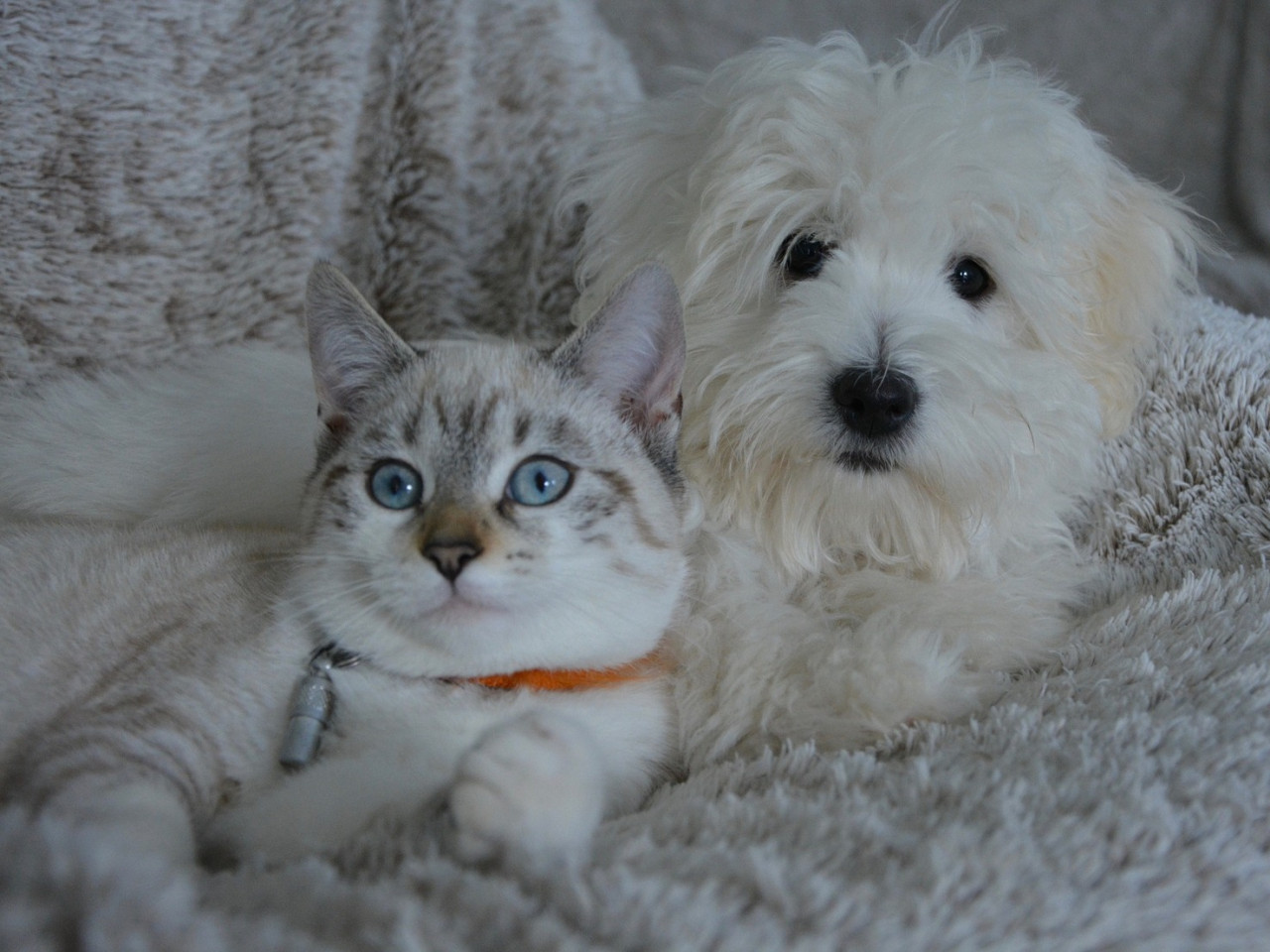
This advice is not intended to replace veterinary care and attention. If your pet has suffered from serious cuts or wounds then, having carried out the first-aid measures described, you should contact your veterinary surgeon for advice on what to do next.
What should I do before starting first aid on my pet's wounds?
Before administering any first aid, assess the severity of the cut or wound. If the bleeding is severe, or if the wound is deep, extensive, in a sensitive area (such as near the eyes, genitals), or over the chest or abdomen then it is best to seek professional veterinary assistance immediately. If there is someone with you, ask them to call the an emergency vet whilst you attend to your pet.
Chest and abdominal wounds, in particular, must be assessed by a veterinary surgeon without delay.
How should I treat my pet's abdominal wound?
Any wound to the chest wall is a medical emergency and should be assessed by a veterinary surgeon without delay. Ideally, have someone call the vet immediately whilst you administer first aid for your pet wound.
Unless the wound is grossly contaminated, in which case brush off any debris and use warm tap water to cleanse the wound, you should skip most of the first aid steps below.
Listen carefully to your pet’s breathing and observe their breathing pattern. If they are making unusual noises, are having difficulty breathing, or showing either a significantly increased respiratory rate or significantly increased chest wall or abdominal movement when breathing that might indicate the wound involves the ribs, or they have a collapsed lung.
If you can hear a sucking noise over the wound when they breathe there is a high chance that the wound has penetrated the chest.
If you think there is chest penetration the best approach is to wrap around your pet’s chest carefully with cling film to create a seal over the chest wall
In all cases, if there is any effect on their breathing or you are concerned the wound has penetrated the chest then you should head straight to the vets, calling them on the way if possible.
How should pet abdominal wounds be treated?
For small abdominal wounds provide first aid as below but if you can see that the wound has penetrated the abdomen or see abdominal organs through the wound then that is a medical emergency, after applying pressure to stem the bleeding, you should head straight to the vets, calling them on the way if possible.
If the abdominal wound is large and abdominal organs are exposed, they may be pushed out of the abdomen where they are at risk of damage and contamination. In such cases, you should carefully cover the exposed organs with a clean towel soaked in tepid tap water and hold it in place whilst you travel to the vet. Do not leave your pet alone at any time with organs exposed as they could self-traumatise them with their mouth or feet.
How can I stop a pet's wound from bleeding?
If the wound is bleeding excessively then your priority should be to stem the flow. Do not attempt to apply a tourniquet – they can cause more injury than they prevent.
If possible, raise the injured area over the level of your pet’s heart to reduce blood pressure.
Applying firm direct pressure to the wound using a clean cloth (a tea towel is ideal) or a sterile gauze pad can help control bleeding. Avoid tissue paper and cotton wool as they will disintegrate and leave fibres in the wound. Maintain continuous pressure for 10 minutes until the bleeding slows down or stops. Try to avoid relieving pressure for at least the first 5 minutes to allow time for clotting to start, undisturbed.
If the wound is clean, and bleeding has stopped or slowed after initial pressure, then you can apply a soft dressing over the wound if you can (see below). Otherwise, clean the wound before dressing.
If the bleeding continues as soon as direct pressure is relieved, then you cannot do any more yourself and you must contact your vet urgently for further advice. In the meantime, keep continuous direct pressure applied to the wound.
How to clean a pet's wound
Once bleeding is under control, you can gently clean the wound to minimize the risk of infection. Be careful not to disturb any clots that have formed.
Medics follow the maxim ‘dilution is the solution to pollution’, so the most important thing is to use copious quantities of fresh clean water. There is no need to add any antiseptics or cleaning agents to the water, tap water is perfectly adequate. Try and use body temperature water.
If the wound is on an appendage, then placing the injury into a large bowl of water and swishing it around is often sufficient; change the water frequently and continue until it is clear. Otherwise, use running water direct from the tap or a hose.
Never use hydrogen peroxide, alcohol or phenolic disinfectants like TCP or Dettol.
Once the wound is clean, gently pat it dry with a clean cloth or kitchen roll, again avoiding disturbing any clots that may have formed.
It is not recommended to apply any creams or ointments to wounds yourself. Many are toxic to skin cells and delay healing and others are toxic to pets.
How to bandage a pet's wound
Once the wound is clean you need to try to cover it to protect it from contamination and further injury.
For wounds on appendages, a simple light dressing using bandage material, a clean cloth or tea towel or a cotton sock secured using plaster tape or even parcel tape, at a push, is sufficient until you can have your pet checked by a vet.
Regularly check the bandage for any signs of swelling or circulation problems. Avoid tight bandages, you should be able to slip an index finger comfortably between the bandage and your pet’s skin.
For wounds over the head and neck, or trunk a gauze pad or clean kitchen roll can be taped to the skin directly.

